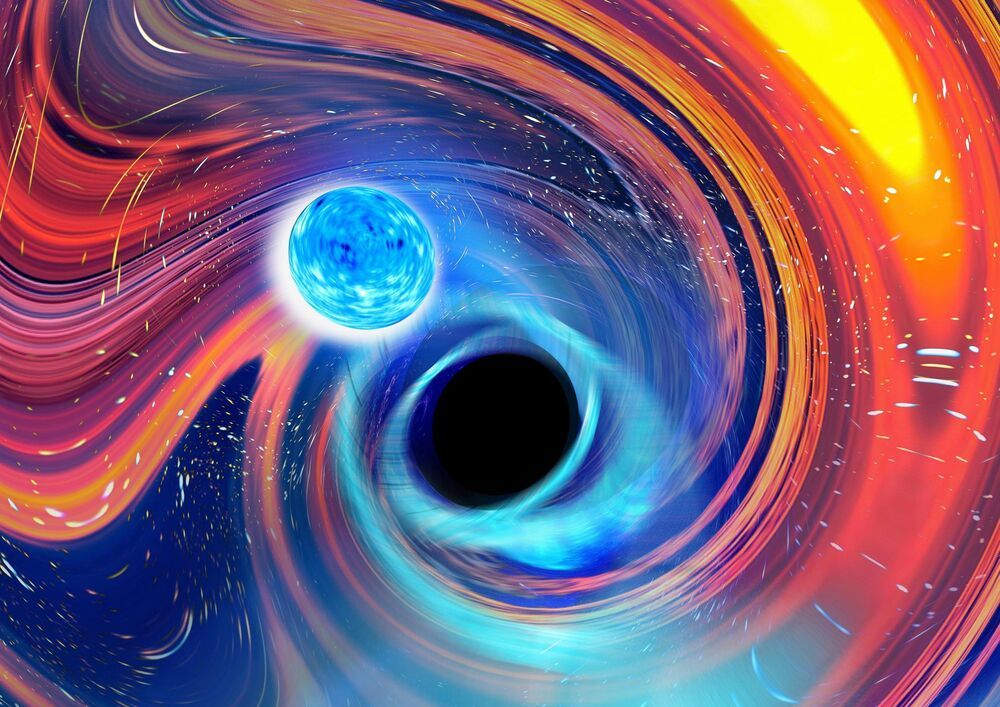Another missing piece has just been added to our knowledge of cosmic phenomena. The LIGO, Virgo and KAGRA collaborations have announced the first detection of gravitational waves[1] resulting from the ‘mixed’ merger between a black hole and a neutron star.[2] The discovery, published on June 29, 2021 in Astrophysical Journal Letters, involves CNRS researchers working within the Virgo scientific collaboration.
Although it has only been only a few years since the very first observation of gravitational waves, the technique has yielded an extensive repertoire of phenomena involving massive cosmic objects. The LIGO and Virgo detectors have already observed mergers of pairs (or binaries) of black holes and, less frequently, of neutron stars. However, gravitational waves detected in January 2020 provide evidence of the existence of a new type of system. The signals, named GW200105 and GW200115 from their dates of detection, were produced by a process that had been predicted but never observed until now: the coalescence of ‘mixed pairs’ called NSBH pairs, each made up of a neutron star and a black hole.[3]
Gravitational waves contain valuable information about their source, such as the mass of the components making up the binary. Analysis of the signals revealed that GW200105 resulted from the merger, some 900 million years ago, of a black hole and a neutron star, respectively 8.9 times and 1.9 times more massive than the Sun, while GW200115 originated from an NSBH pair which coalesced around 1 billion years ago, with masses 5.7 and 1.5 times greater than the Sun. The difference in mass between the components of the system indicates that they are indeed mixed binaries: the mass of the heavier object corresponds to that of a black hole while the mass of the lighter object is consistent with that of a neutron star. The difference between the two masses could also explain why no light signals were detected by telescopes. When a neutron star approaches a black hole it can theoretically be torn apart by tidal forces, causing flares of electromagnetic radiation. However, in the two cases observed, the black hole, being much more massive, could have gobbled up the neutron star in a single mouthful, leaving no trace.
